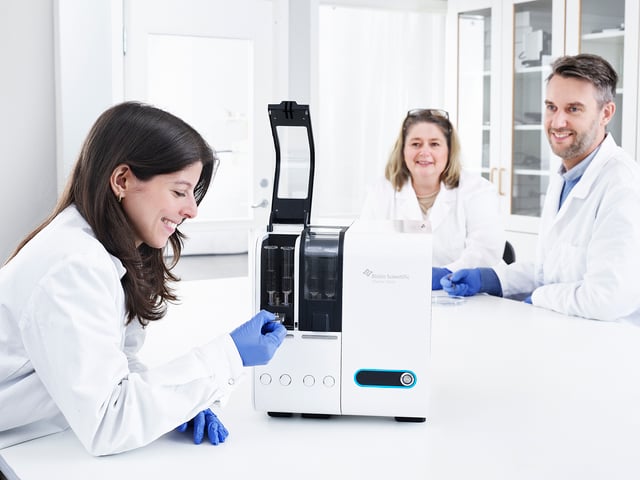
In the world of surface science and molecular interaction studies, precision and efficiency are key. The QSense Omni instrument offers exceptional capabilities for small volume measurements. In this blog post, we'll explore the benefits of using QSense Omni for small volume measurements and provide a step-by-step guide on how to execute these measurements effectively. Additionally, we have included a video tutorial to help you get started.
Minimal Sample Requirement: The QSense Omni is designed to work with the low sample volumes, which is particularly beneficial when dealing with expensive or limited-availability samples. This is achieved through its direct-injection fluidics system, which minimizes the liquid pathway and reduces the required sample volume.
Faster Kinetics Measurements: The direct-injection system also allows for faster liquid exchange, enabling the study of rapid kinetic processes that might be missed with traditional systems.
Versatility and Automation: The QSense Omni is equipped with automated sample handling and cleaning functions, which streamline the experimental process and reduce manual labor. This automation ensures high reproducibility and efficiency in your measurements.
Executing small volume measurements with the QSense Omni is a straightforward process, thanks to its user-friendly design and advanced software. Here’s a step-by-step guide to help you get started:
When setting up experiments for low volume measurements with the QSense Omni, several factors should be taken into account to ensure optimal results:
To illustrate the effectiveness of the QSense Omni in small volume measurements, let's look at an example experiment:
The data, Fig. 1, showed a smooth response with no air bubbles affecting the measurement. The Sauerbrey thickness indicated a 3 nm layer was quickly established, with a gradual increase over time.
 Figure 1. QCM-D raw data, QSense Omni small volume measurement BSA adsorption.
Figure 1. QCM-D raw data, QSense Omni small volume measurement BSA adsorption.
This example demonstrates the QSense Omni's capability to deliver precise and reliable data even with minimal sample volumes, making it an ideal choice for studies involving expensive or rare samples. By minimizing sample requirements, the QSense Omni not only reduces costs but also opens up new possibilities for research where sample availability is limited. Its advanced fluidics and automation ensure high reproducibility and accuracy, critical for cutting-edge research in fields such as pharmaceuticals, materials science, and biotechnology.
For a step-by-step guide on executing small volume measurements with the QSense Omni, watch our video tutorial. This visual guide will walk you through the process, ensuring you can make the most of your QSense Omni instrument.
Learn best practices and step-by-step methods for accurate QCM-D coating thickness measurement on QSense sensors using QSense Omni.
Compared to QCM, QCM-D measures an additional parameter, and provides more information about the system under study.
Discover how QCM-D analysis reveals real-time etching dynamics, helping optimize cleaning processes and protect surfaces from unwanted damage.
Discover how QSense QCM-D helps tackle fouling challenges across industries
Discover how QCM-D enables real-time, label-free analysis of supported lipid membrane formation, structure, and dynamics for advanced research
Learn how QSense QCM-D analysis can reveal membrane fouling dynamics and optimize cleaning strategies for more efficient water treatment
Patrícia is the Global Technical Product Manager for QSense at Biolin Scientific. She holds a Master of Science in Nanotechnology from Chalmers University of Technology and also spent time at the University of Oslo, where she conducted research in soft matter, surfaces, and nanoparticles. Since joining Biolin Scientific in 2019, Patricia has served as both an Application Scientist and Product Owner before stepping into her current global management role
